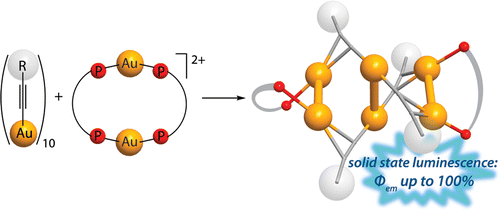- Информация о материале
- Просмотров: 1130
Из РЦ МРМИ уволилась Светлана Пылаева. Мы желаем Светлане всего самого наилучшего на новом месте работы!

- Информация о материале
- Просмотров: 1561
E.Yu. Bulatov, T.G. Chulkova, I.A. Boyarskaya, V.V. Kondratiev, M. Haukka, V.Yu. Kukushkin
“Triple associates based on (oxime)Pt(II) species, 18-crown-6, and water: Synthesis, structural characterization, and DFT study”
J. Molec. Struct. 2014, 1068, 176-181
DOI: 10.1016/j.molstruc.2014.04.010

The associates 2(cis-[PtCl2(acetoxime)2])⋅18-crown-6⋅2H2O (1), 2(cis-[PtBr2(acetoxime)2])⋅18-crown-6⋅2H2O (2), and trans-[PtCl2(acetaldoxime)2]⋅(18-crown-6)⋅2H2O (3) were synthesized by co-crystallization of free corresponding platinum species and 18-crown-6 from wet solvents and characterized by 1H NMR and IR spectroscopies, high-resolution mass-spectrometry (ESI), TG/DTA, and X-ray crystallography. The (oxime)Pt(II) species are assembled with 18-crown-6 and water by hydrogen bonding between the hydroxylic hydrogen atoms of the oxime ligands and the oxygen atom of water and between the hydrogen atoms of water and the oxygen atoms of 18-crown-6. In 2(cis-[PtX2(acetoxime)2])⋅18-crown-6⋅2H2O (where X = Cl (1), Br (2)), the molecule of the crown ether is located between the two cis-[PtX2(acetoxime)2] species. The associate trans-[PtCl2(acetaldoxime)2]⋅(18-crown-6)⋅2H2O (3) crystallizes into a 1D array structure. Water molecules play the role of linkers between the (oxime)Pt(II) species and the crown ether molecules. The electronic structures and vibrational frequencies of the triple associates were studied by density functional theory (DFT/B3LYP).
- Информация о материале
- Просмотров: 1184
На экскурсию познакомиться с методом ЯМР приходили студенты магистры 1 года обучения с химического факультета СПбГУ.
- Информация о материале
- Просмотров: 1579
Вышла новая статья пользователей.
I.O. Koshevoy, Y.-C. Chang, Y.-A. Chen, A.J. Karttunen, E.V. Grachova, S.P. Tunik, J.Janis, T.A. Pakkanen, P.-T. Chou
“Luminescent Gold(I) Alkynyl Clusters Stabilized by Flexible Diphosphine Ligands”
Organometallics, 2014, ASAP
DOI: 10.1021/om5002952

Treatment of the homoleptic decanuclear compounds (AuC2R)10 with the cationic gold diphosphine complexes [Au2(PR′2-X-PR′2)2]2+ results in high-yield formation of the new family of hexanuclear clusters [Au6(C2R)4(PR′2-X-PR′2)2]2+ (PR′2-X-PR′2 = PPh2-(CH2)n-PPh2, n = 2 (1, R = diphenylmethanolyl), n = 3 (3, R = diphenylmethanolyl; 4, R = 1-cyclohexanolyl; 5, R = 2-borneolyl), 4 (6, R = 1-cyclohexanolyl); PR′2-X-PR′2= PCy2-(CH2)2-PCy2 (2, R = diphenylmethanolyl); PR′2-X-PR′2 = 1,2-(PPh2-O)-C6H4 (7, R = diphenylmethanolyl); PR′2-X-PR′2 = (R,R)-DIOP (8, R = diphenylmethanolyl)). In the case of PPh2-(CH2)4-PPh2 phosphine and −C2C(OH)Ph2 alkynyl ligands an octanuclear cluster of a different structural type, [Au8(C2C(OH)Ph2)6(PPh2-(CH2)4-PPh2)2]2+ (9), was obtained. Complexes 1–3, 7, and 9 were studied by X-ray crystallography. NMR and ESI-MS spectroscopic investigations showed that all but two (2 and 9) compounds are fluxional in solution and demonstrate dissociative chemical equilibria between major and a few minor forms. All of these complexes are intensely emissive in the solid state at room temperature and demonstrate very high quantum yields from 0.61 to 1.0 with weak influence of the alkynyl substituents R′ and the diphosphine backbones on luminescence energies. Two crystalline forms of the cluster 2 (P21/n and P21 space groups) exhibit unexpectedly contrasting yellow and sky blue emission, maximized at 572 and 482 nm, respectively. Electronic structure calculations with density functional methods demonstrate that the transitions responsible for the highly effective phosphorescence are dominated by contributions from the Au and π-alkynyl orbitals.
- Информация о материале
- Просмотров: 1116
Статьи с участием сотрудников и пользователей РЦ





